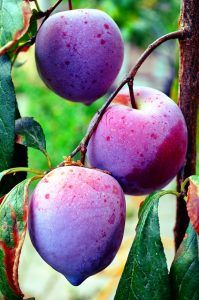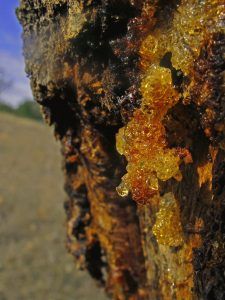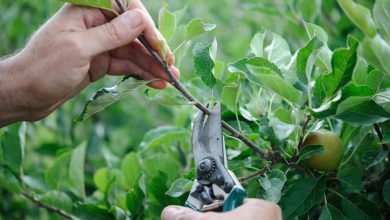Plum Diseases: [Types and How to Fight Them]

 Having a large harvest of plum trees is everyone’s dream, but for this to happen, you have to be very attentive to their diseases.
Having a large harvest of plum trees is everyone’s dream, but for this to happen, you have to be very attentive to their diseases.
These manifest themselves with numerous and well-defined symptoms in most cases, so observing our trees is important.
When it is determined that the tree may be sick, it will be essential to start the treatment as soon as possible.
If you don’t know much about the subject and you prefer to have everything well explained, join us on this tour where we will deal with everything on this subject.
gummosis
 Many species of fruit trees often suffer from this disease that produces secretions on the trunk and branches of the trees. This secretion has a rubbery appearance, hence its name, and its color can range from white to light brown.
Many species of fruit trees often suffer from this disease that produces secretions on the trunk and branches of the trees. This secretion has a rubbery appearance, hence its name, and its color can range from white to light brown.
The reason this occurs is due to the presence of harmful microorganisms inside the plant.
These can enter due to wounds, through the roots, because they do not have enough nutrients, among others.
If the disease is attacked in time, there will be no damage to regret.
Treatment of gummosis in plum
For the gummosis to disappear, the first step will be to scrape the entire affected area to remove the gummy secretion.
As it is most likely that this will affect the structure of the plant to some extent, it is best to do it with a disinfected knife.
To know how far it is necessary to scrape, the structure of the plant must be assessed in detail, allowing the area that is light green to be reached.
At this point, what will follow is to apply a special product to treat this type of disease that helps attack microorganisms.
For a more lasting effect, specialists recommend doing a repeat two weeks later.
leprosy or dent
 Leprosy causes the plum tree to detach its leaves, making them change color during the process.
Leprosy causes the plum tree to detach its leaves, making them change color during the process.
This action harms the healthy development of the plant, which concludes that it is not capable of offering healthy fruits as would be normal.
The condition is mainly focused on trees whose fruits have stones.
For this reason, special attention should be paid if the affected plum tree is close to other trees with similar characteristics, such as the peach tree.
If the disease is not attacked in time, it is capable of generating lesions on the fruits, which will be seen with dark spots.
Treatment of leprosy in plum
To attack this disease it is necessary to use chemical products that attack the fungi that produce it. These are based on copper but close attention must be paid to the correct times of use.
In general, its use is prohibited when the plant is in the process of flowering and is raised until after harvesting.
plum dwarfism
It is a disease that, as its name indicates, prevents the fruit tree from developing properly. Its presence causes the plum tree to have small and very thick leaves plus some buds in all areas of the plant.
Certain dark green spots may also appear throughout the structure.
Plum stunting treatment
When a plant suffers from stunting it will be impossible for it to produce a proper harvest. In these cases, the waiting period for it to reach the size it should be is five years.
When the change does not occur, the most suitable thing is to extract the affected specimens and proceed to plant some that are healthy.
bacteria stains
Finally, there are the spots that cause bacteria in the entire structure of the plant, from the leaves to the fruits. The contamination is produced by the wounds that the plant suffers, especially in the fall, when the leaves fall.
The most worrying thing is that they are capable of appearing under any circumstance of the terrain and even the weather.
When it affects, the tree weakens, the leaves fall and the fruits do not complete their ripening process as they should.
In addition, this weakening makes room for other infectious diseases to also attack the plant.
Treatment of bacterial spots on plum trees
To deal with the disease, it is best to work with chemical products made from copper.
It is also a good idea to remove the areas of the plant that are most affected and burn them to prevent their spread.
Taking care of your plum tree in each of the stages of its development will be decisive to achieve the best productive cycle.
Diseases are the order of the day, but if we are well prepared, we will be able to deal with them in a timely manner.
References and bibliography
- http://www.alimentosargentinos.gob.ar/contenido/valorAr/organicos/links/frutihorticolas/Manejo%20de%20plagas%20y%20enfermedades%20durazno%20ciruela%20cereza%20-%20Gutierrez.pdf
- https://www.researchgate.net/profile/Francisco_Arroyo/publication/256768238_Aspectos_tecnicos_y_varietales_de_utilidad_para_el_cultivo_ecologico_del_ciruelo/links/00b7d5278a50432596000000/Aspectos-tecnicos-y-varietales-de-utilidad-para-el-ciruelo-ecologico.pdfcultivo

![Photo of Almond Tree Care: [Irrigation, Sun Exposure, Pruning and Fertilizing]](https://www.complete-gardening.com/wp-content/uploads/2022/08/almond-tree-care-irrigation-sun-exposure-pruning-and-fertilizing-390x220.jpg)


